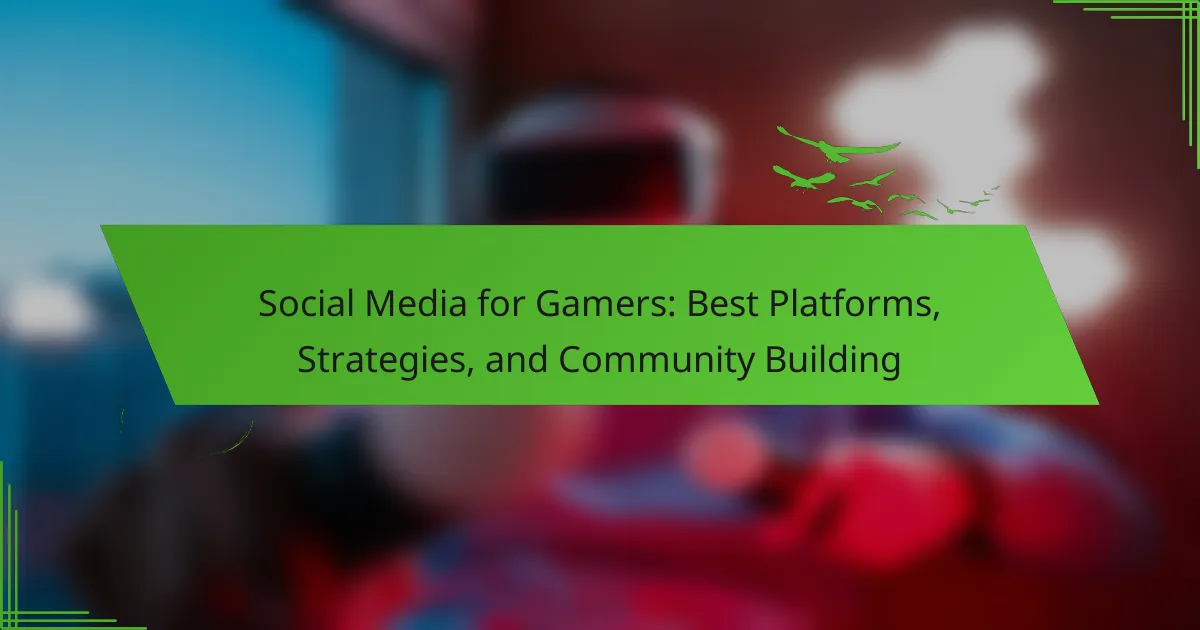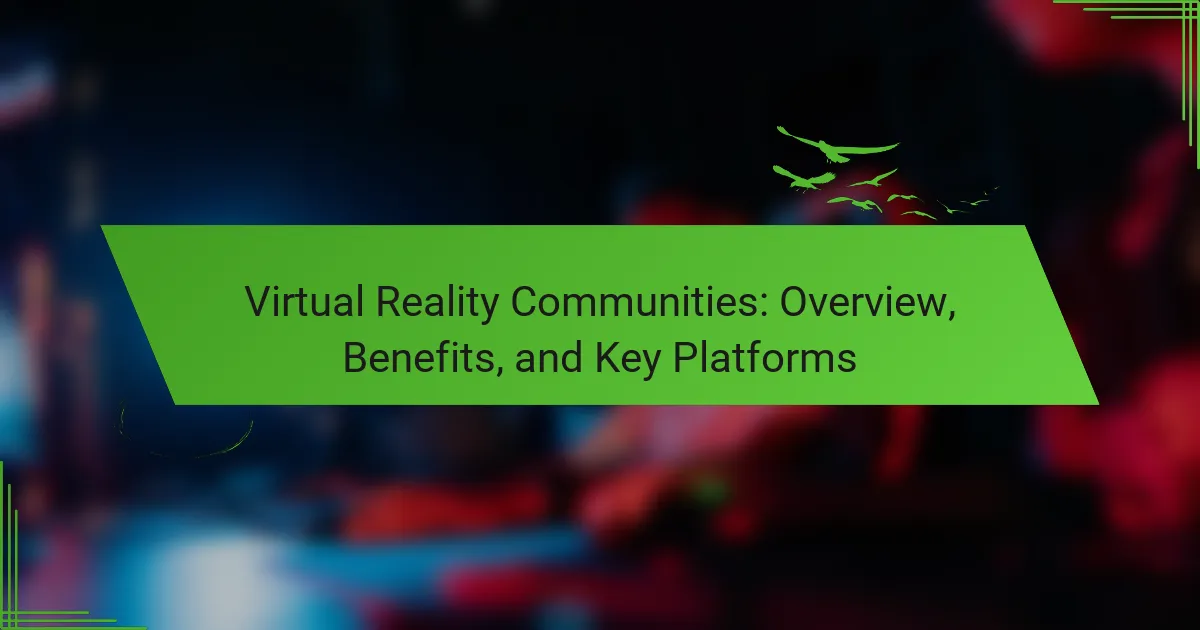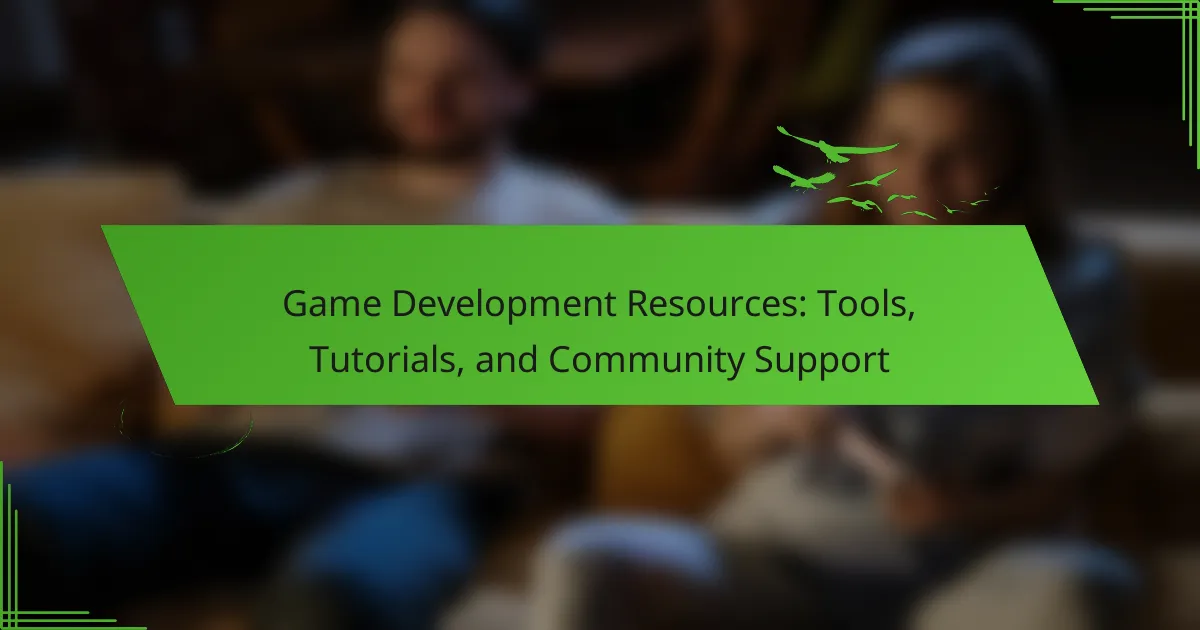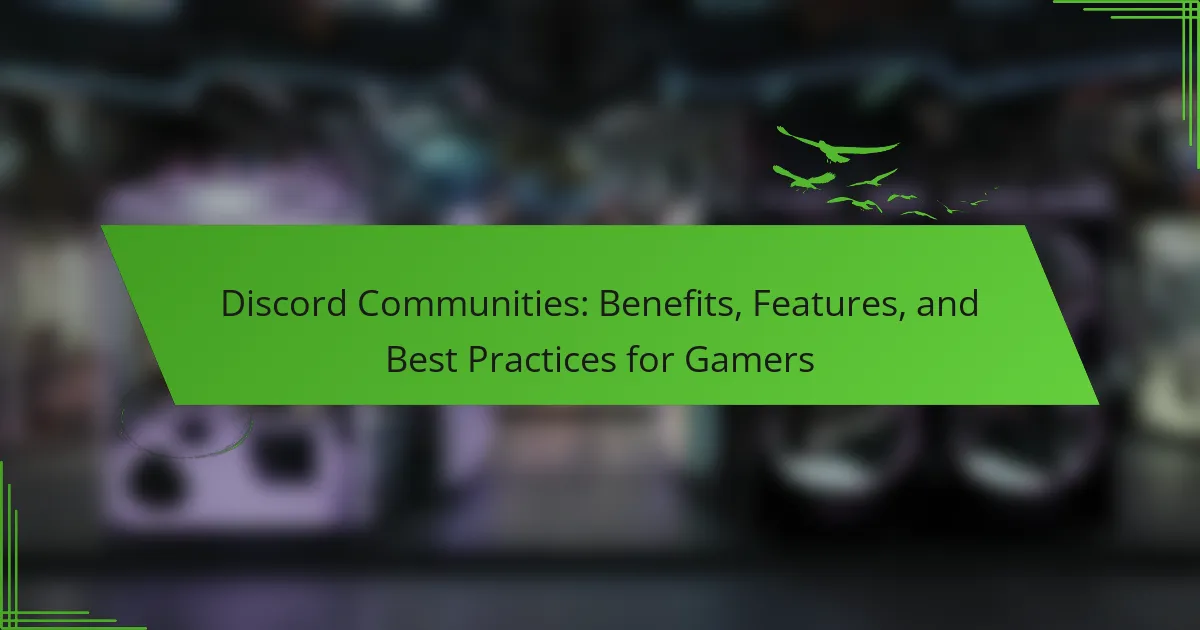Social media platforms like Twitch, Discord, YouTube, and Twitter are essential for gamers seeking to enhance their online presence. Explore effective strategies for engaging content creation, community building, and collaboration. Learn how to navigate challenges such as toxicity and misinformation while leveraging emerging trends in interactive streaming and cross-platform engagement. Discover how to foster meaningful connections within the gaming community.
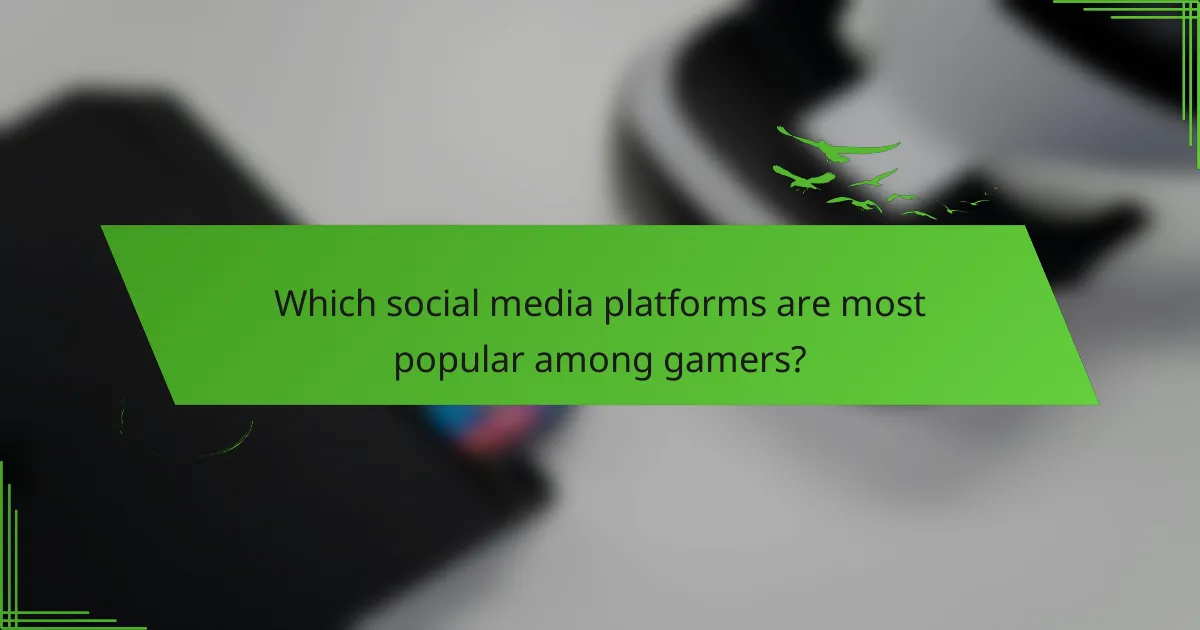
Which social media platforms are most popular among gamers?
Twitch, Discord, YouTube, and Twitter are the most popular social media platforms among gamers. Twitch offers live streaming, fostering real-time interaction. Discord provides community-building tools with voice and text channels. YouTube serves as a hub for gaming content and tutorials. Twitter facilitates updates and networking within the gaming community. Each platform caters to different aspects of gamer engagement, enhancing social interaction and content sharing.
How do platform preferences differ across regions?
Platform preferences for gamers vary significantly across regions due to cultural, economic, and technological factors. For instance, North America favours Twitch for live streaming, while Europe leans towards Discord for community engagement. In Asia, platforms like WeChat and TikTok dominate, reflecting local social media habits. These differences influence how gamers interact, share content, and build communities, shaping unique gaming cultures in each region.
What features attract gamers to specific platforms?
Gamers are attracted to specific platforms for their unique features, community engagement, and social connectivity. Key aspects include user-friendly interfaces, exclusive content, and cross-platform compatibility. Additionally, platforms that foster community building through forums, live streams, and social media integration enhance user experience. The ability to share gameplay and connect with friends significantly influences platform preference.
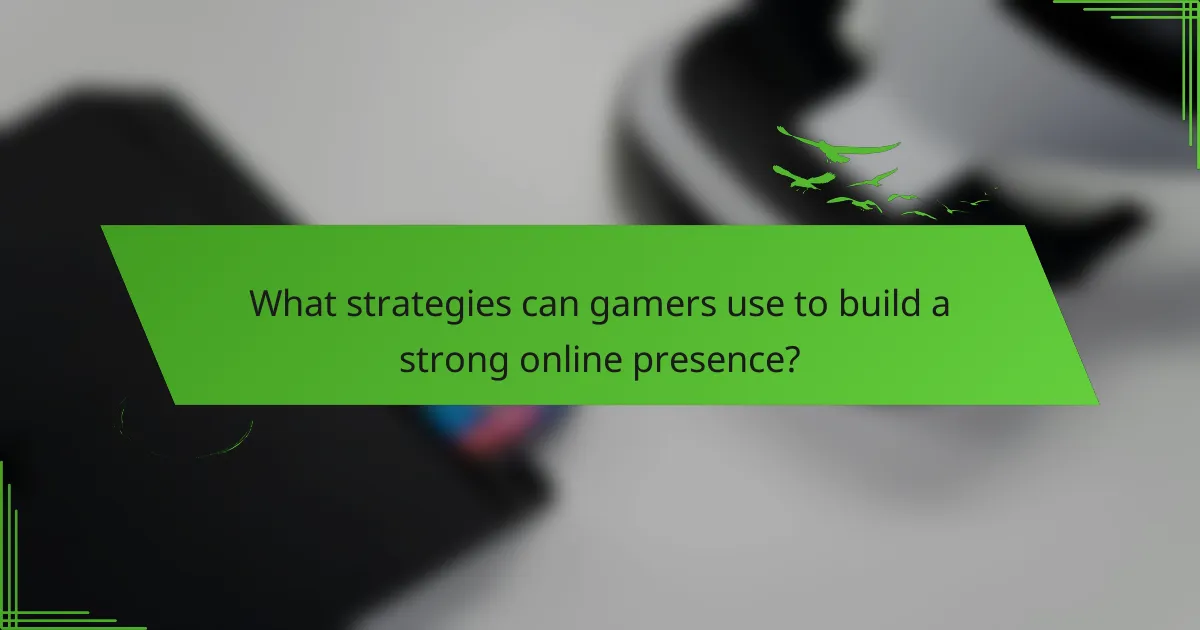
What strategies can gamers use to build a strong online presence?
Gamers can build a strong online presence by engaging consistently on social media platforms. Focus on platforms like Twitch, YouTube, and Twitter to showcase gaming skills and connect with audiences.
1. Create regular content: Stream gameplay, share highlights, or post tutorials.
2. Interact with followers: Respond to comments and participate in discussions.
3. Collaborate with other gamers: Partner for joint streams or shoutouts.
4. Utilize hashtags: Increase visibility by using relevant gaming hashtags.
5. Join gaming communities: Engage in forums and groups to build relationships.
6. Analyze engagement: Monitor metrics to refine strategies based on audience preferences.
How can content creation enhance community engagement?
Content creation enhances community engagement by fostering interaction and building relationships among gamers. Engaging content encourages participation, leading to stronger community ties. For example, live streams and interactive posts invite real-time feedback, creating a sense of belonging. Regular updates and community-driven events maintain interest and excitement, which can lead to increased loyalty and advocacy for gaming brands.
What role does streaming play in gamer social media strategies?
Streaming plays a crucial role in gamer social media strategies by enhancing engagement and community interaction. It allows gamers to showcase their skills in real-time, fostering a sense of connection with their audience. Live streaming platforms like Twitch and YouTube Gaming serve as primary venues, enabling gamers to build personal brands and attract followers. Additionally, streaming facilitates direct communication through chat features, which enhances viewer loyalty and community building. This interactive element is a unique attribute that sets streaming apart from traditional content creation.
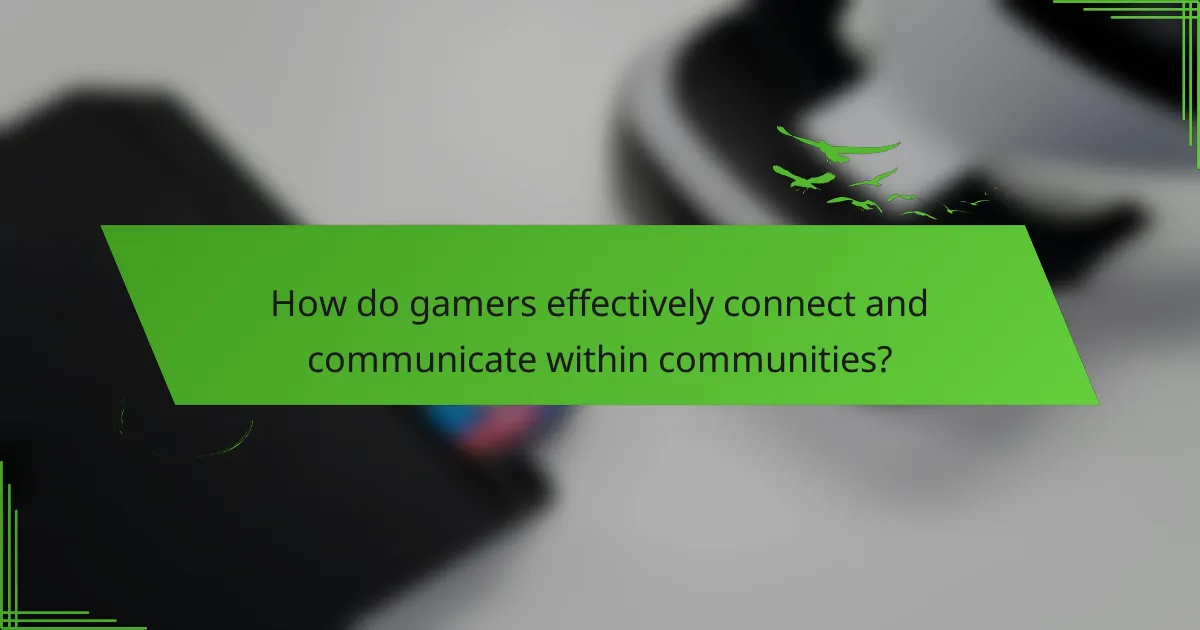
How do gamers effectively connect and communicate within communities?
Gamers effectively connect and communicate within communities by utilizing dedicated platforms, engaging strategies, and fostering relationships. Popular platforms include Discord, Twitch, and Reddit, where users can join discussions, share content, and participate in live streams.
Building a community requires consistent interaction, such as hosting events, sharing updates, and encouraging user-generated content. Gamers often leverage social media features like groups, forums, and direct messaging to enhance communication.
Establishing a unique identity within these communities can attract like-minded individuals. Gamers should focus on niche interests, which can lead to deeper connections. Additionally, maintaining a positive environment promotes inclusivity and encourages participation.
As a result, effective communication tools and strategies can significantly enhance the gaming experience, fostering a sense of belonging and collaboration among players.
What are the best practices for fostering inclusivity in gaming communities?
To foster inclusivity in gaming communities, prioritise open communication, diverse representation, and respectful engagement. Encourage players to share their experiences and perspectives.
1. Establish clear community guidelines promoting respectful behaviour.
2. Create diverse content reflecting various backgrounds and experiences.
3. Implement moderation systems to address toxicity and harassment.
4. Organise inclusive events that welcome players from all demographics.
5. Provide resources and support for underrepresented groups.
6. Foster partnerships with organisations advocating for inclusivity in gaming.
How can gamers leverage social media for networking opportunities?
Gamers can effectively leverage social media for networking by engaging with communities, sharing content, and participating in discussions. Platforms like Twitch, Discord, and Twitter facilitate connections with fellow gamers and industry professionals. Gamers should focus on building a personal brand, showcasing their skills, and collaborating with others. Engaging consistently increases visibility and fosters relationships, which can lead to opportunities in gaming events, sponsorships, and collaborations.
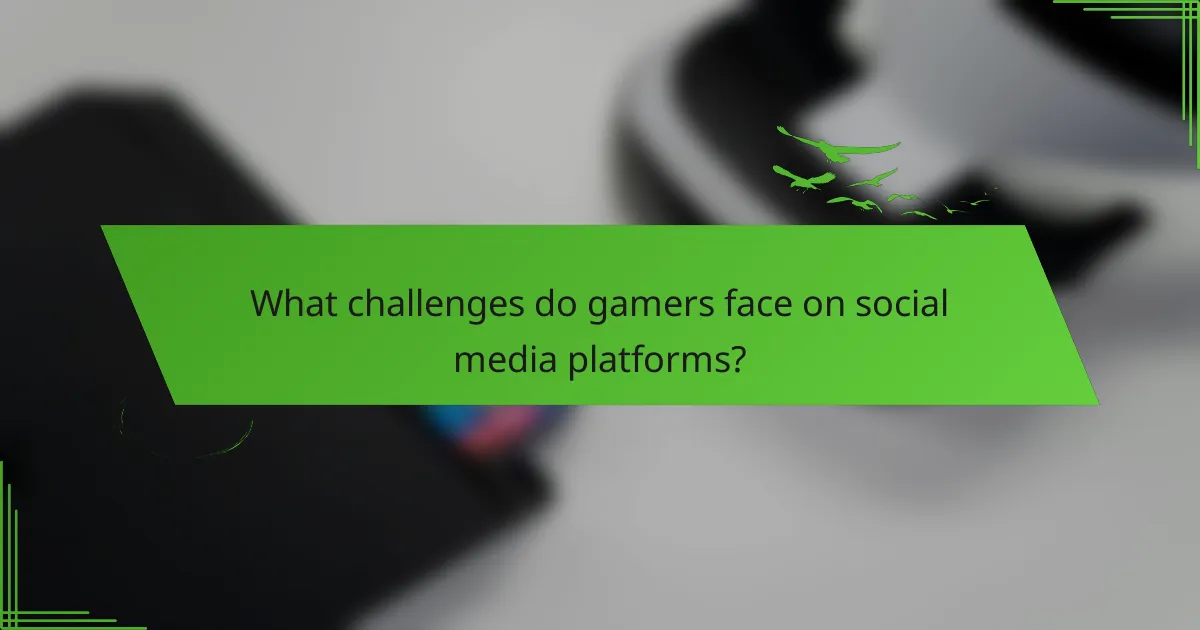
What challenges do gamers face on social media platforms?
Gamers face challenges on social media platforms such as toxicity, misinformation, and privacy concerns. Toxic behaviour can lead to negative experiences and discourage engagement. Misinformation can spread rapidly, affecting community trust. Privacy issues arise from data sharing and online harassment, impacting user safety and comfort.
How can gamers navigate toxicity and negativity online?
Gamers can navigate toxicity and negativity online by fostering positive interactions and utilising platform tools. Building a supportive community is essential. Engage with like-minded individuals and report toxic behaviour. Use moderation features available on platforms to maintain a healthy environment. Set clear boundaries for interactions to minimise negativity.
What tools are available to manage social media interactions?
Various tools exist to manage social media interactions effectively. Popular options include Hootsuite, Buffer, and Sprout Social, which offer features like scheduling, analytics, and engagement tracking. These platforms facilitate community building by allowing gamers to connect, share, and interact seamlessly. Brands can leverage unique attributes of these tools, such as Hootsuite’s comprehensive dashboard or Buffer’s user-friendly interface, to enhance their social media strategies.
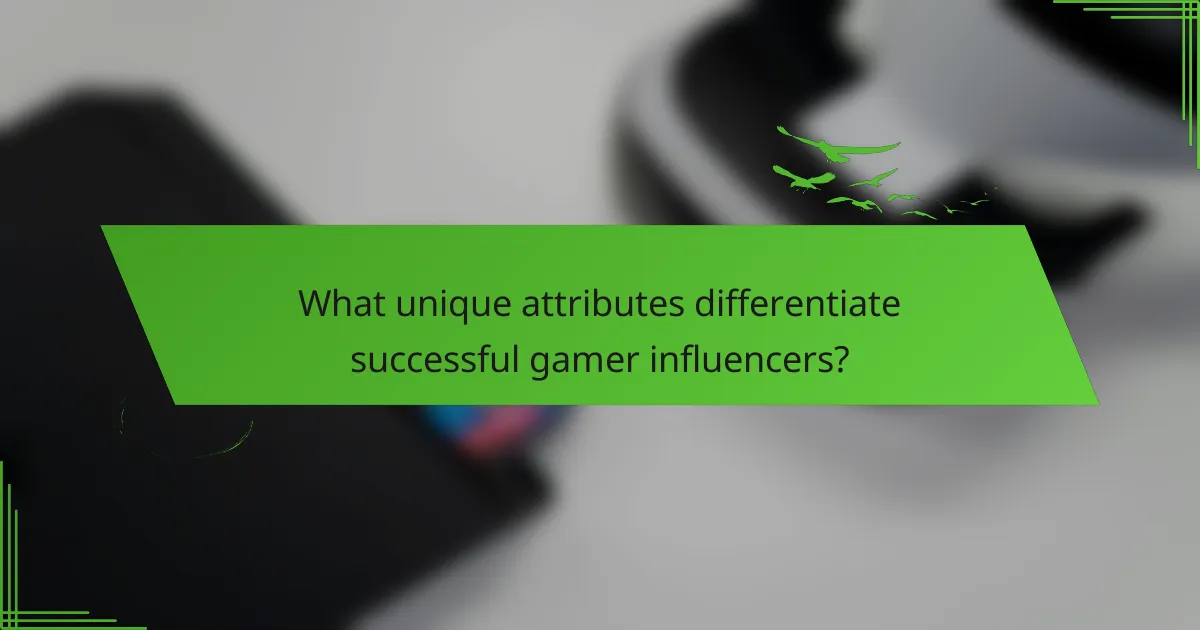
What unique attributes differentiate successful gamer influencers?
Successful gamer influencers stand out through their authenticity, engagement, and niche expertise. They build strong connections with their audience by sharing personal stories and gaming experiences. Unique attributes include a distinct gaming style or personality that resonates with followers, innovative content formats, and strategic collaborations with brands or other influencers. These factors contribute to their overall influence and community-building success.
How do niche interests shape influencer content?
Niche interests significantly influence influencer content by tailoring it to specific gamer communities. Gamers seek relatable content that reflects their unique preferences and experiences. Influencers who align their strategies with these interests foster deeper engagement and loyalty. For instance, a focus on competitive gaming can lead to content that emphasises strategy and skill development, while casual gaming influencers might share fun, light-hearted gameplay moments. This targeted approach enhances community building, as gamers feel understood and represented.
What metrics define success for gamer influencers?
Engagement rate, follower growth, content reach, and brand collaborations define success for gamer influencers. These metrics reflect the effectiveness of their strategies and community-building efforts. Engagement rate measures audience interaction, while follower growth indicates popularity. Content reach assesses visibility, and brand collaborations highlight market influence.
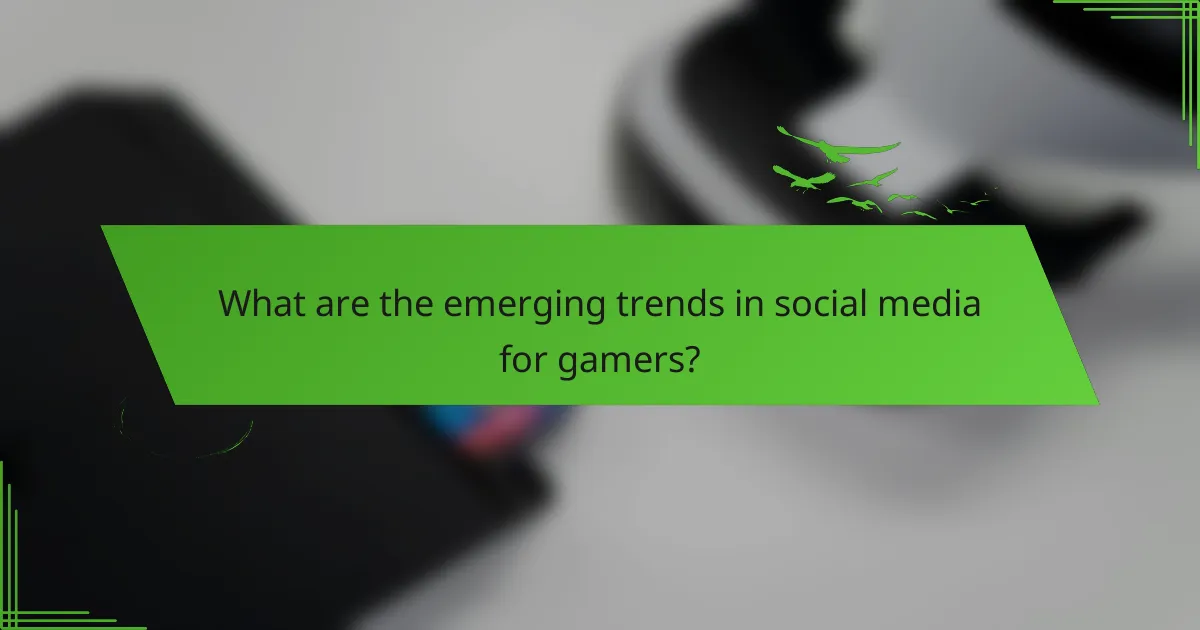
What are the emerging trends in social media for gamers?
Emerging trends in social media for gamers include interactive streaming, community-driven content, and cross-platform engagement. These trends enhance player interaction and foster deeper connections within gaming communities.
Interactive streaming platforms, such as Twitch and YouTube Gaming, allow gamers to engage with audiences in real time. This creates a dynamic environment where viewers can influence gameplay through chats and polls.
Community-driven content is gaining traction as gamers collaborate to create shared experiences. Platforms like Discord facilitate these interactions, enabling players to form dedicated communities around specific games or genres.
Cross-platform engagement is becoming essential as gamers seek to connect across various devices. Social media platforms are adapting to support seamless sharing of gaming content, enhancing visibility and reach for gamers and developers alike.
How is virtual reality influencing social media interactions?
Virtual reality is transforming social media interactions by fostering immersive experiences. Gamers can engage in virtual environments, enhancing communication and collaboration. This technology enables real-time interactions, creating a sense of presence among users. As a result, communities form around shared gaming experiences, strengthening social bonds.
What impact do esports events have on social media engagement?
Esports events significantly boost social media engagement by creating real-time interaction opportunities. Gamers share experiences, insights, and highlights during events, enhancing community connection. Platforms like Twitter and Twitch see increased activity, with users posting live reactions and engaging in discussions. This engagement fosters brand partnerships and sponsorships, driving further interest in gaming content.
What are the best practices for optimizing social media strategies in 2025?
To optimize social media strategies for gamers in 2025, focus on building authentic communities. Engage users through interactive content, such as live streams and gaming events, to foster connections. Use data analytics to tailor content and improve reach. Prioritise platforms popular among gamers, like Twitch and Discord, for effective community building. Embrace emerging technologies, such as AR and VR, to enhance user experiences and engagement.
